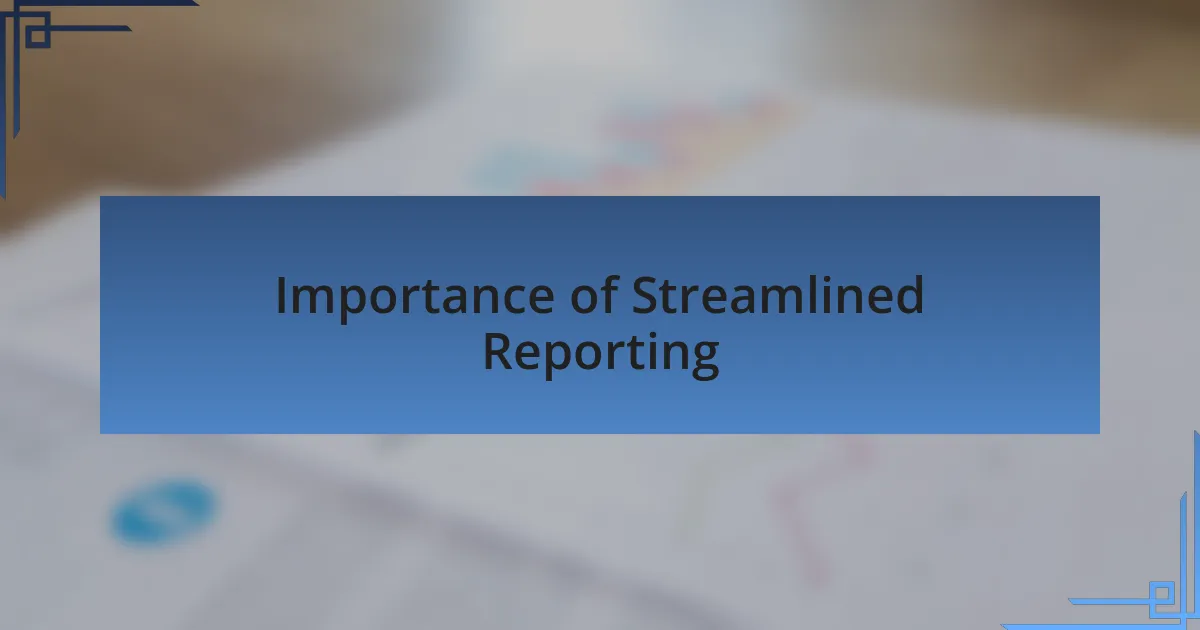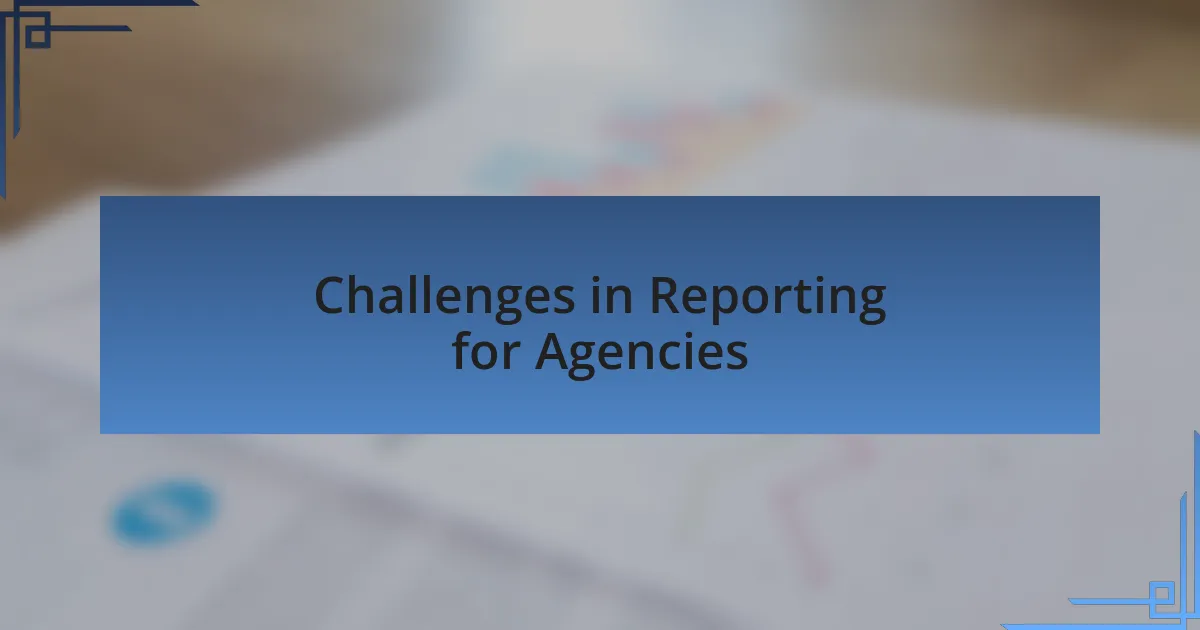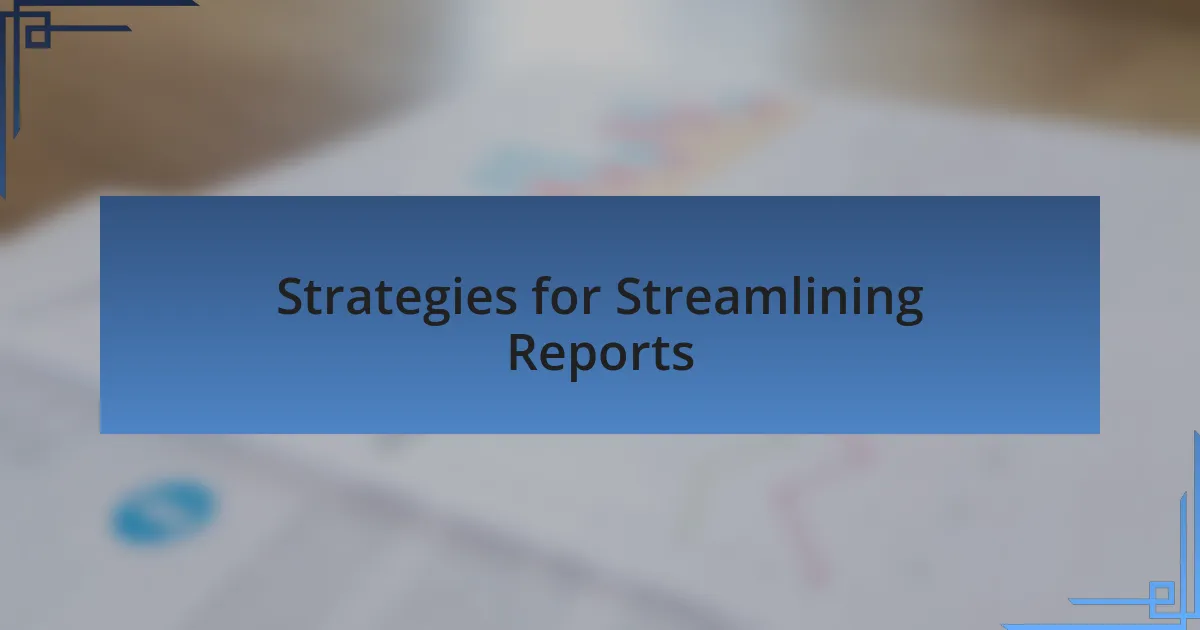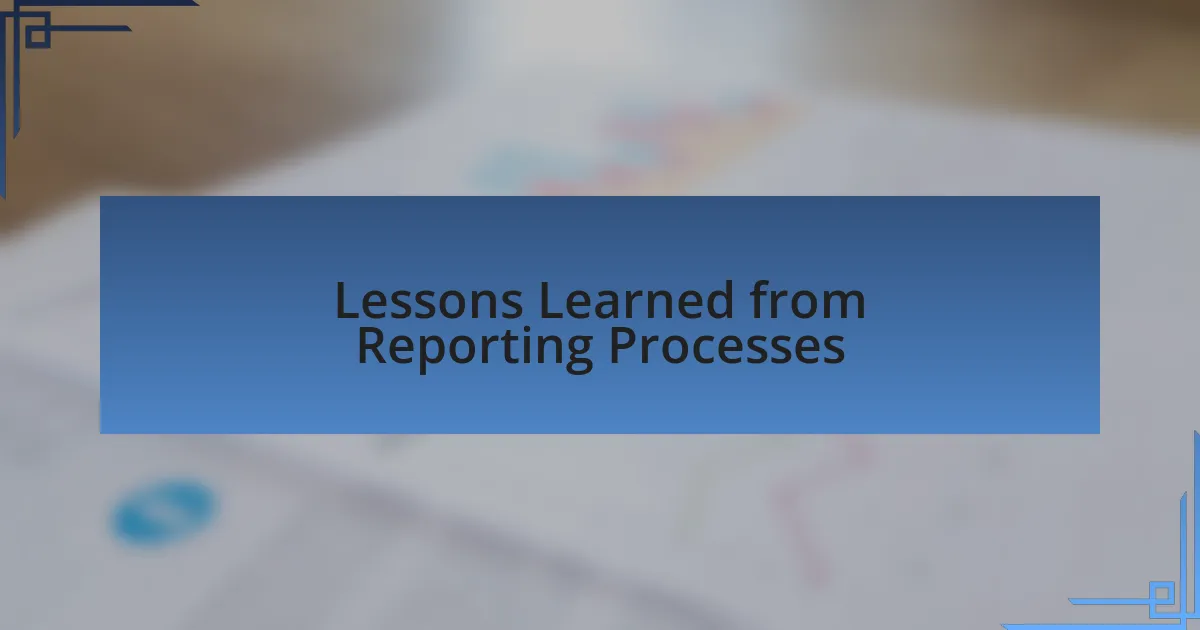Key takeaways:
- Streamlined reporting enhances clarity, promotes quicker decision-making, and builds trust between agencies and clients.
- Utilizing data visualization and standardizing report templates significantly improves client engagement and understanding.
- Continuous feedback and iterative improvements are essential for refining reporting processes and meeting diverse audience needs.

Overview of Reporting Processes
Reporting processes are the backbone of any digital marketing agency, providing clarity and direction in our strategies. I’ve often felt that the effectiveness of these processes can make or break client relationships. When data is simply relayed without context, how can clients understand the true impact of their campaigns?
In my experience, a well-structured reporting process transforms raw data into a compelling narrative. For instance, I recall a time when I streamlined our reporting format to include visuals, which made the insights more digestible for clients. Suddenly, they weren’t just looking at numbers; they were engaging with the story behind those numbers.
Moreover, integrating feedback loops into our reporting has been transformative. I vividly remember implementing a quick check-in with clients after sending reports. Not only did it show our commitment to transparency, but it also fostered a collaborative environment where clients felt heard and valued. Isn’t it fascinating how a simple tweak can deepen client trust and enhance collaboration?

Importance of Streamlined Reporting
Streamlined reporting not only saves time but also enhances clarity for both the agency and the client. I’ve seen firsthand how a simple, focused report can lead to quicker decision-making. When reports are clear and concise, they empower clients to take action without sifting through unnecessary data. Have you ever found yourself lost in a sea of numbers? I certainly have, and that’s why clarity is paramount.
The emotional impact of streamlined reporting shouldn’t be underestimated. I recall a situation where we presented a simplified report to a longstanding client, and their relief was palpable. Instead of confusion and frustration, they expressed gratitude for the clarity we provided. It’s moments like these that remind me how effective communication leads to stronger client relationships.
Furthermore, effective reporting shapes the foundation of trust between an agency and its clients. When I first adopted a more visual reporting style, I felt a shift in our conversations. Clients began to engage more meaningfully with the data presented, asking insightful questions instead of simply accepting the figures at face value. Isn’t it amazing how a more accessible report can drive deeper discussions and collaborative strategies?

Challenges in Reporting for Agencies
Reporting for agencies comes with its own unique challenges that can feel overwhelming. One of the most significant hurdles I’ve encountered is data overload. You’re managing various campaigns, metrics, and platforms, and suddenly, you’re faced with an avalanche of data. How do you decide what’s essential? During a particularly hectic quarter, I remember spending hours trying to sift through endless spreadsheets, only to realize that most of the information was irrelevant to our client’s immediate needs.
Another challenge is keeping everyone on the same page. Different stakeholders often have varying expectations regarding what should be reported and how. I recall a project where the marketing team wanted detailed analytics, while the client simply preferred high-level insights. Balancing these diverse needs was a delicate act, and it taught me the importance of establishing a clear reporting framework that aligns with everyone’s objectives from the beginning.
Finally, keeping up with rapidly changing metrics and tools poses an ongoing challenge. The digital landscape is constantly evolving, and if you’re not staying abreast of the latest trends and tools, your reporting may quickly become outdated. There have been instances where I had to pivot strategies mid-report due to new insights, which was stressful but ultimately rewarding. What have you found to be your biggest reporting challenges? I bet sharing experiences could reveal other invaluable lessons.

Tools for Effective Reporting
When it comes to effective reporting, the right tools can make all the difference. In my experience, platforms like Google Data Studio and Tableau have revolutionized the way I visualize data. I remember the first time I used Data Studio; it transformed my raw data into compelling graphics that not only impressed our clients but also made it easier for my team to extract insights quickly. Have you ever felt a lightbulb moment when a tool suddenly makes a complex task effortless?
Another tool worth mentioning is project management software, such as Asana or Trello, which enhances collaboration and accountability. I vividly recall a situation where the team was drowning in tasks and reports. Once we integrated Trello into our workflow, everything became more streamlined. I couldn’t believe how much easier it was to track progress and ensure everyone was aligned. Have you tried using such tools to enhance team communication?
Lastly, automated reporting tools, like HubSpot or SEMrush, can save you countless hours by aggregating data and generating reports with little manual effort. I vividly remember setting up automated reports for a particularly demanding client; suddenly, I could focus more on strategy and less on the nitty-gritty of data collection. It felt liberating. How has automation changed your approach to reporting? The ease it brings can free you up to focus on what truly matters—delivering value to your clients.

Strategies for Streamlining Reports
To streamline reporting processes, standardizing templates can be incredibly effective. I found that creating a uniform structure for reports helped my team save time and reduce confusion. It’s like having a recipe—once everyone knows the ingredients and steps, you can focus on making the dish better instead of figuring out how to cook it every time. Have you ever thought about how templates could simplify your reports?
Another strategy involves utilizing data visualization techniques to make complex information more digestible. During a recent project, I used infographics to present marketing metrics, and the feedback was overwhelmingly positive. Clients engaged more with visuals than with traditional text-heavy reports. Isn’t it fascinating how a simple design choice can transform perceptions and enhance understanding?
Lastly, monthly review meetings can help keep the reporting process efficient. By gathering the team to discuss the findings collectively, we not only address any issues but also brainstorm improvements. I remember one such meeting where we identified a recurring problem in our data extraction processes, leading us to implement changes that saved us hours of work subsequently. Have you considered the value of collaboration in refining your reporting approach?

Personal Experience in Streamlining
When I first tackled the challenge of streamlining reports, I discovered the importance of clarity in communication. I vividly remember a project where I consolidated various data sources into one dashboard. The relief in my team’s eyes was palpable when they realized they no longer had to sift through multiple spreadsheets. Have you experienced that sense of liberation when everything you need is just a click away?
Another pivotal moment for me was experimenting with automation tools. I implemented a reporting tool that scheduled automatic updates, which cut our manual reporting time by nearly 50%. I recall the first time I presented a report generated in real-time; the look of surprise on my colleagues’ faces was priceless. Wouldn’t it be amazing to think of what more you could achieve if you spent less time on the mundane aspects of reporting?
Moreover, I’ve learned that gathering feedback is crucial for continuous improvement. After each major report, I actively sought input from my team on what worked and what didn’t. One instance stood out when a team member suggested a different metric to track our success, which significantly altered our focus but ultimately boosted our outcomes. How often do you reflect on your processes and seek that invaluable feedback?

Lessons Learned from Reporting Processes
One significant lesson I’ve gleaned from refining my reporting processes is the value of iterative improvement. I remember introducing a new reporting format to the team, and while it seemed perfectly structured to me, the initial response was less than enthusiastic. It’s interesting how a simple tweak, like altering the layout or adding visual elements, can transform a report from a chore into something engaging. Have you ever witnessed a shift in engagement simply by changing how information is presented?
Another takeaway has been the importance of tailoring reports to different audience needs. In one instance, I crafted a comprehensive report for our executives that was rich in data but fell flat on clarity. It struck me how crucial it is to not just relay raw numbers but to provide context that resonates with the audience. Isn’t it fascinating how understanding your audience can make or break the effectiveness of your reporting?
Additionally, timing plays a critical role in reporting. I’ve learned that presenting data too late can cause missed opportunities. There was a moment when I rushed out an urgent report after a busy week, only to realize later that timely insights were lost in the noise. That experience shifted my perspective on prioritizing timely, relevant information. How often do we let timing slip through our fingers in the rush of everyday tasks?